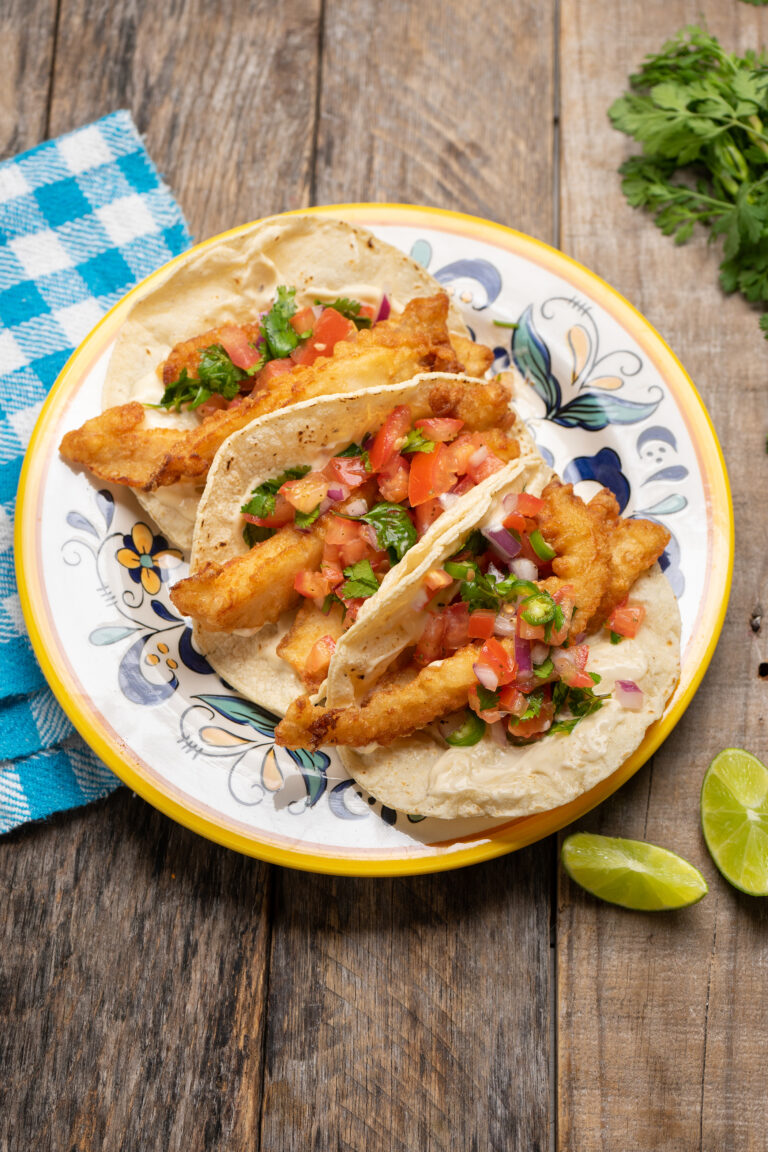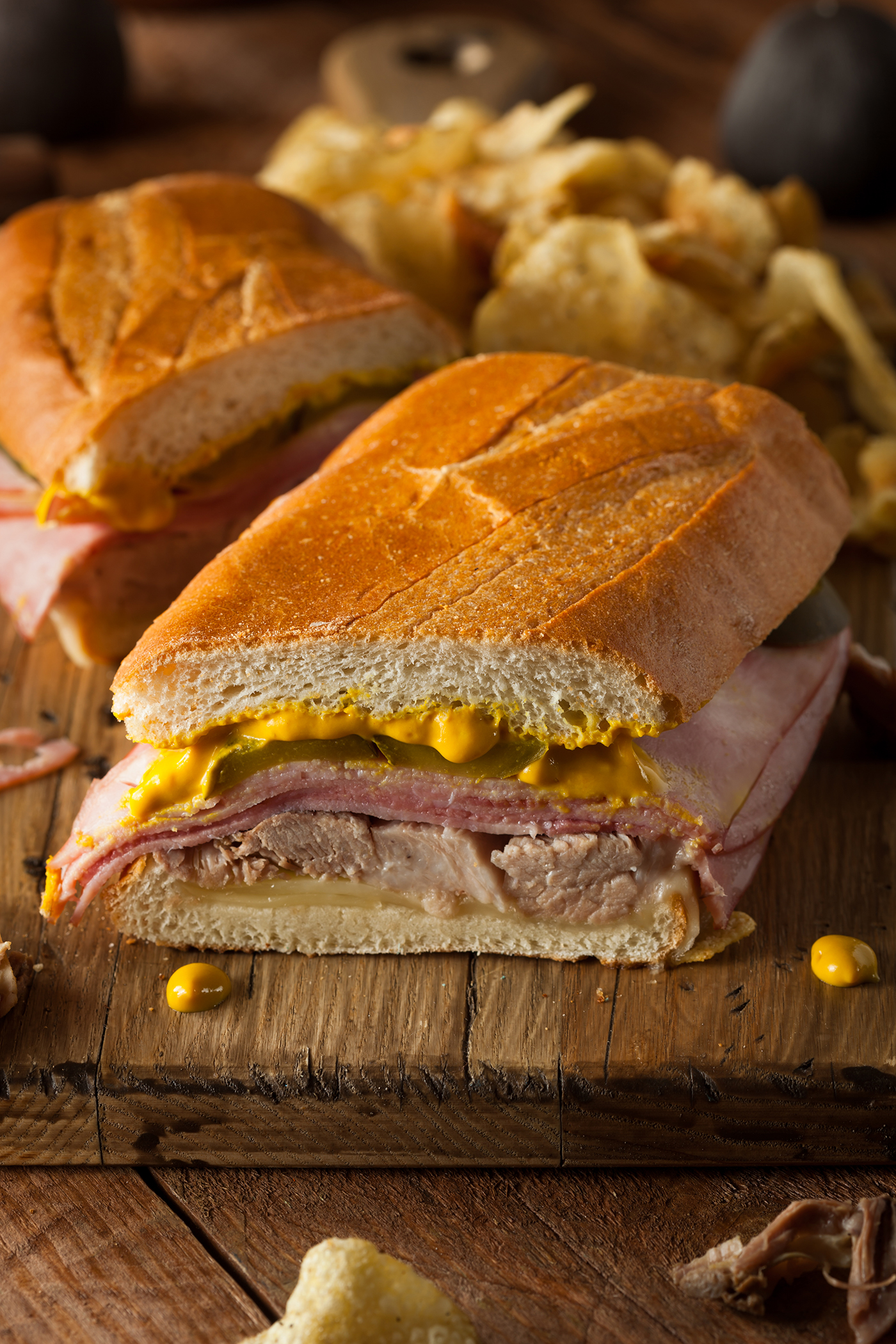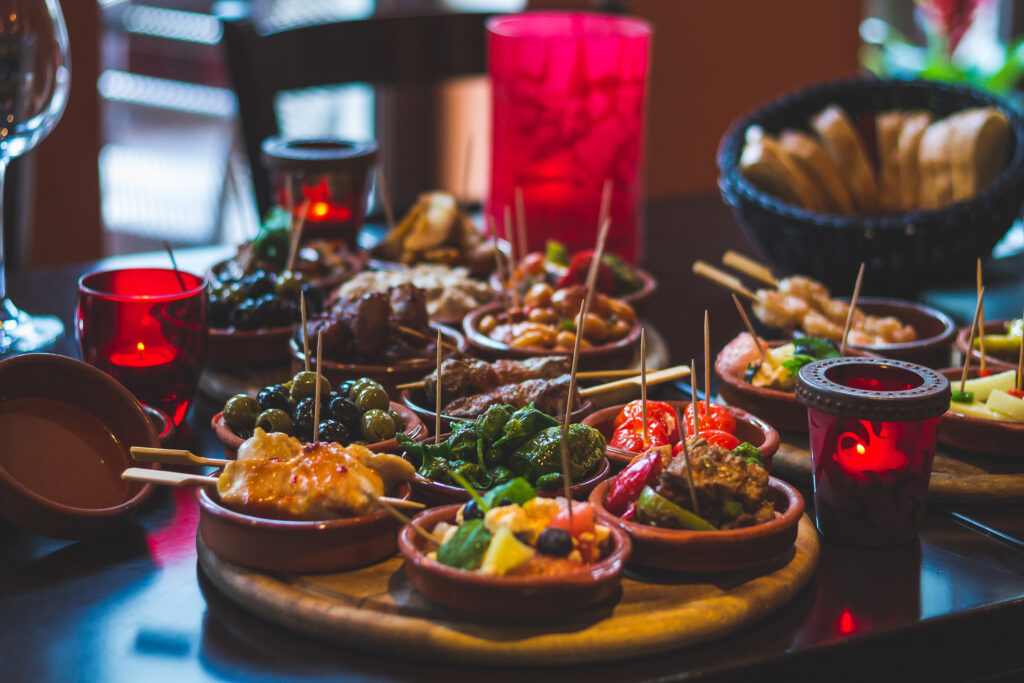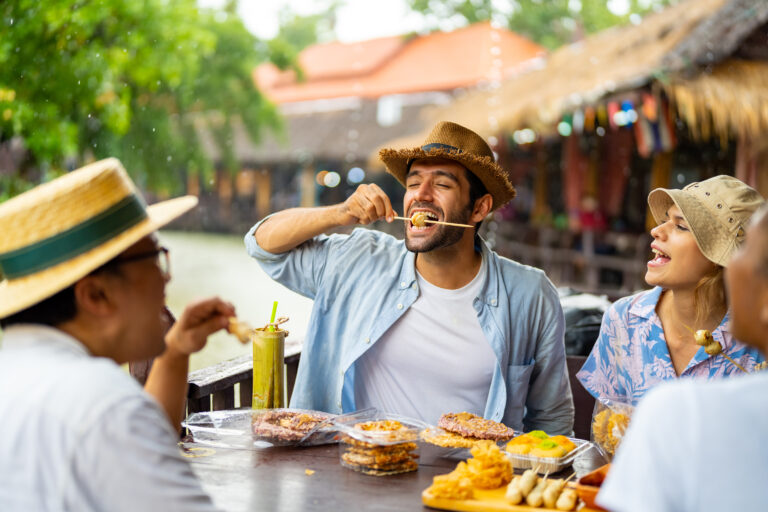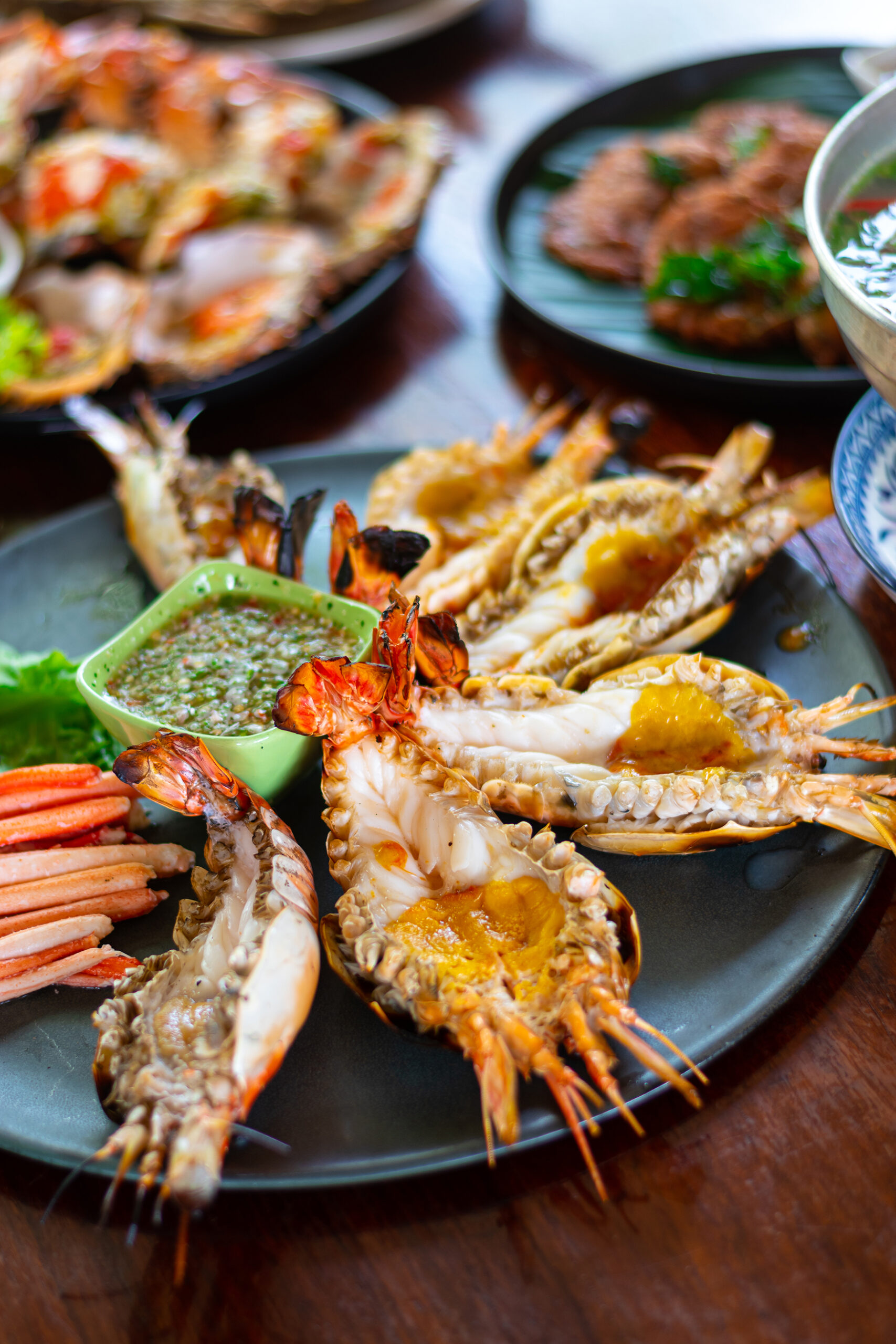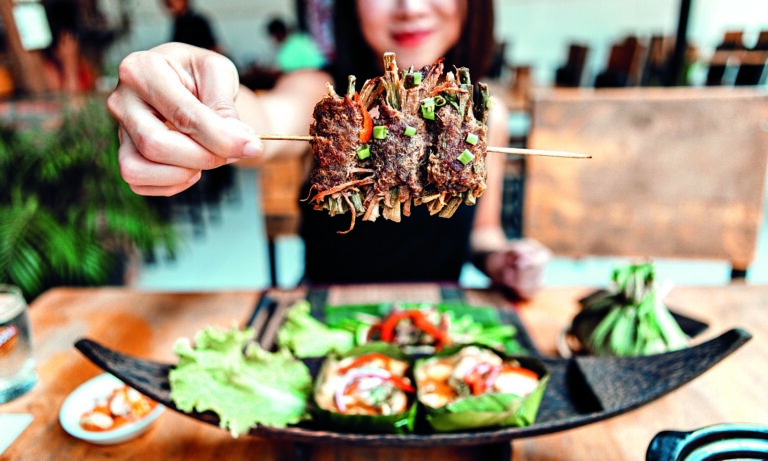By Ivette M. Yee
Just like historical landmarks, certain food can draw visitors from all over the world. Discover these must-have dishes that may lead you to your next destination.
Some of our favorite big cities have been fighting for decades. And these aren’t just pithy disputes — these are food fights. That’s right, if you ask a New Yorker or Chicagoan who makes the better pizza, mentally prepare yourself for a brawl beyond resolve.
But at the end of the day, whether you prefer thin and cheesy or saucy and deep-dish, both cities win, because they, like many culinary hotspots dotted across the globe, have their own unique flavors ingrained in their identity.
And according to the experts, there’s much you can learn from discovering the best bites.
“The foods that a town becomes famous for tell us a lot about the people important to its founding,” says Carlos Frías, an author and James Beard Award–winning former Miami Herald food editor. “A city’s food tells us about the people who helped build it.”
For John Noble Masi, a culinary professor at the Chaplin School of Hospitality & Tourism Management at Florida International University, one of the top-ranked public hospitality programs in the United States, stellar dishes also highlight the best locally available ingredients.
“The best places for food are dictated by availability and geography,” Masi says. “A lobster roll is the thing in Maine because they harvest a lot of lobster there. In Georgia, in the summer, it’s all about Georgia peaches.”
FOODIE-APPROVED DESTINATIONS
If you’re a true gastronaut who will travel any distance for food, here are some of the tantalizing items around the globe and near Interval member resorts.
FISH TACOS — SAN DIEGO AREA, CALIFORNIA
He may not have caught a big wave, but Ralph Rubio caught a fever for fish tacos. In the late 1970s, the San Diego native was on spring break when he discovered fish tacos at a simple beach stand in San Felipe, Mexico. In 1983, Rubio opened his own taco stand in Mission Bay, serving the
easy-to-eat handhelds Ensenada style: fresh fried white fish topped with slaw, salsa, a crema-style sauce, and topped with a wedge of lime in a corn tortilla. Popularity caught on and other eateries catering to the beach-going masses along the Pacific coast also began offering fish tacos and adding different takes, including ones with grilled and blackened fish and other types of seafood. These days, Rubio operates Rubio’s Coastal Grill with more than 150 restaurants in three states, but it’s best to try these where it all began.
CUBAN SANDWICH — MIAMI, FLORIDA
There are good sandwiches and there are great sandwiches — the latter being ones you must grip with two hands. Take a bite and realize immediately that you’re not going to share with anybody. Cuban sandwiches fall into the great group: Imagine piles of savory roast pork, sweet ham, and gooey melted cheese served on planks of toasted Cuban bread. Although some folks in Tampa may disagree, no other city in the United States can make this sandwich better than Miami, where the largest population of Cuban immigrants settled.
“Cuban sandwiches are popular because they’re so easy,” Frías says. “Restaurant workers can pre-make them, stack them up, and press them throughout the day. They’re a tradition. Oh, and they’re also delicious.” Add another Miami staple, the croqueta, a deep-fried, thumb-size treat usually filled with ham and bechamel, to your Cuban sandwich to make it a croqueta preparada. Either way, you won’t be sorry.
TAPAS — TENERIFE, CANARY ISLANDS, SPAIN
When is a little plate of food enough? When you order a lot of them. That’s the idea behind Spanish tapas — appetizers or snacks served alongside beer or wine. Popular throughout Spain, these small dishes represent a slate of big flavors. And it’s customary in Spain for friends and family to meet and socialize in bars, share the best tapas a bar is known for, and then move on to the next one. It is said that tapas got their name from the way they were once served: right on top of the beverage. This savvy placement prevented insects and dust from contaminating the drink. And today, tapas come in all shapes and sizes, from a simple dish of olives to savory grilled pieces of octopus, but don’t miss the classics: pan tumaca (toasted bread rounds topped with ripe, juicy tomatoes and extra virgin olive oil), patatas bravas (crispy fried potatoes drizzled with a spicy red sauce), gambas al ajillo (shrimp drenched in olive oil and garlic), and tortilla española (a thick sliced omelet made with potatoes).
STREET FOOD — PHUKET, THAILAND
Undiscovered flavors and new taste adventures can be found in the blissful beach province of Phuket, the Pearl of the Andaman. Sweet chili, creamy curry, and pungent lemongrass complement Phuket’s bounty of blissful beaches: a hungry traveler’s dream come true. Walk the Old Town streets to find market stalls, sidewalk grills, and wandering vendors selling authentic foods infused with spices ground by mortar and pestle right in front of you. The Michelin Guide released a report listing the best street food spots in Phuket. You can also stick to highly reviewed local food tours (available through Interval Travel’s Tours & Activities) to experience a variety of must-tries, such as moo ping, or satay (grilled skewers of marinated beef, chicken, or pork often served with peanut sauce), khao niao (sticky rice), and som tum (a salad mix of shredded papaya, crushed chilis, lime, and peanuts). Grab a bowl of kuay tiaw, noodle soup made with fragrantly rich broth, egg or rice noodles, loaded with pork, beef, chicken, or seafood, and served with a pile of fresh lettuce, bean sprouts, cilantro, and basil. Save room for roti, crispy pancakes topped with sweetened condensed milk and sugar. Humble and inexpensive, Thai street food, just like other must-have dishes, leaves you with tastes you’ll remember.
Ivette M. Yee is a journalist, food writer, and the daughter of a chef and restaurant owner. She grew up in her family’s Miami Beach restaurant eating authentic Szechuan, Cantonese, and Cuban food.

